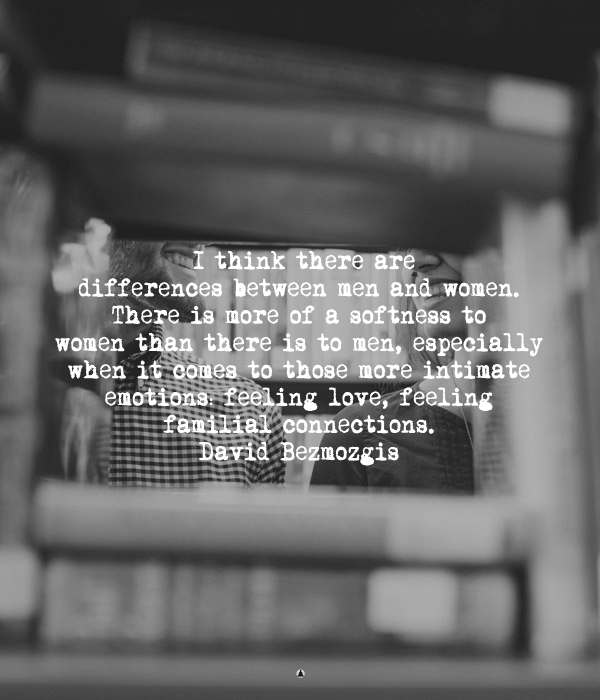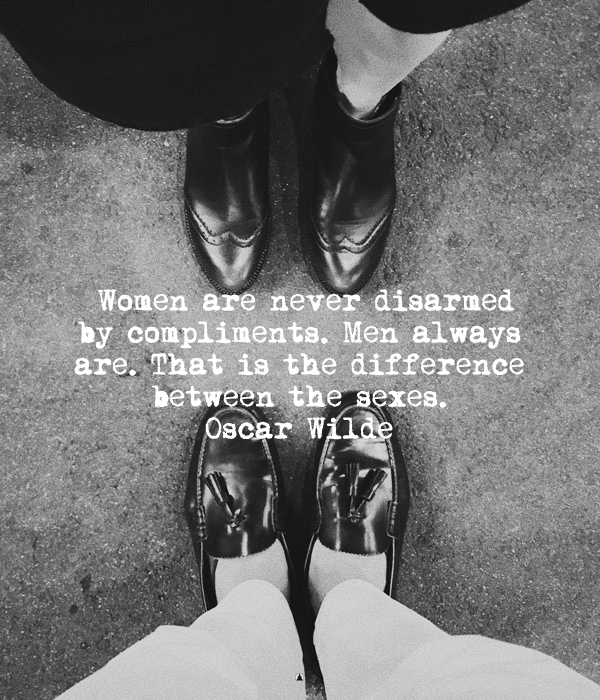Join Our Newsletter
Subscribe with your email to receive the latest news, updates, and exclusive offers.
We are all human. We are all equal. We all have the same rights. We all have hearts, blood running through our veins, lungs to breathe, eyes to see, legs to walk. We are all one. That fact is indisputable. Each and every single one of us, whether male or female, is a human being.
However, even though we will never stop fighting for gender equality, there are certain things in life that are pretty much different for men and women. That’s just how it is and how always will be. Our distinct anatomies put aside, studies have shown that some of our differences are based on the way we handle our emotions, the way we use our brain and the way we function.
Here are some unspoken ways life is different for women and men:
WOMEN SLEEP MORE THAN MEN
Ladies, if you’ve been struggling to get up in the morning, I feel you. Here’s the real reason why.
Jim Horne, a British sleep neuroscientist, emeritus professor of psychophysiology at Loughborough University and author of the book Sleep faring revealed that on average women tend t sleep 30 minutes more than men.
Moreover, research from 1995 in which were involved 400 adults, found that women fall asleep earlier than men and they also sleep for a longer period of time.
2. MEN SEE FEWER COLORS THAN WOMEN
Women are often teased that they are picky about choosing colors. But could it be because men are simply colorblind? Apparently yes. Science says that men are more likely to be colorblind than women because the genes responsible for colorblindness are on the X chromosome.
So, while males have one X chromosome, females have two X chromones, which basically means that one functional gene on only one of the chromosomes is enough to make up for the loss on the other.
There you have it. Next time you ask for your boyfriend to bring you the teal colored dress from your wardrobe, be prepared to get the green one instead.

3. WOMEN AREN’T AS CAPABLE OF SEEING FAST MOVING OBJECTS
A study that was published in the Biology of Sex Differences discovered that men might actually be better at noticing fast-moving objects from afar. The visual cortexes of the male brain are far more developed than the ones in the female brain. This is partially due to their higher levels of testosterone.
According to professor Israel Abramov, who was also one of the authors of the study, females and males have different evolutionary advantages. The fact that men could see fast-moving objects could be the reason why men were always considered good hunters, just as the fact that women can see a wider range of colors could be the reason why they were always better gatherers.
4. MEN ARE LESS LIKELY TO BE RELIGIOUS THAN WOMEN
A 2014 survey revealed that in the US, women are more likely to say that religion is an important part of their lives. That is 72% religious Christian women against 62% Christian men.
According to the Marta Trzebiatowska and Steve Bruce, authors of the book Why are Women more Religious than Men, the gender gap is not due to our biological differences, but rather it is a result of other social differences such as managing birth, caregiving of children and taking responsibility for the developments of the children’s value system.
5. MEN ARE MORE AFFECTED BY DISEASES
It seems like the whole man flu thing is not just men pretending they are dying. A recent study which examined mice showed that when adult male mice were exposed to bacteria that caused a certain illness, they displayed more symptoms of sickness than the female mice. Having in mind that these studies have been done on mice, and not on actual people, it would be best to just take this research with a grain of salt.
However, experts say that these findings actually raise important questions for people too. According to studies, human cells, especially male cells have more active receptors, or in other words, a heightened immune response that summons cells to the site of the microbe and eventually increases the levels of sickness.
6. WOMEN ARE MORE LIKELY TO BE INVOLVED IN CHARITIES

According to experts, this is due to the fact that women often see themselves as caregivers.

7. WOMEN TALK MORE
One of the most common stereotypes is that women talk more than men. Luckily, there’s a study that actually discovered whether or not that generalization is true. The researchers Jukka-Pekka “JP” Onnela, assistant professor of biostatistics at Harvard School of Public Health (HSPH), and Professor David Lazer at Northeastern University gathered data by using electronic devices on interactions between people in two different settings.
The first was a collaborative setting between fellow students who were working on a project. The second was a casual setting where a few colleagues were having lunch. The results showed that while women tended to interact more in the first setting, there was a very small difference between the communicating patterns of women and men in the second one.
Does that mean that women tend to talk more, but only in certain scenarios? Perhaps yes, but the most important thing that we need to remember is that we shouldn’t make broad generalizations.